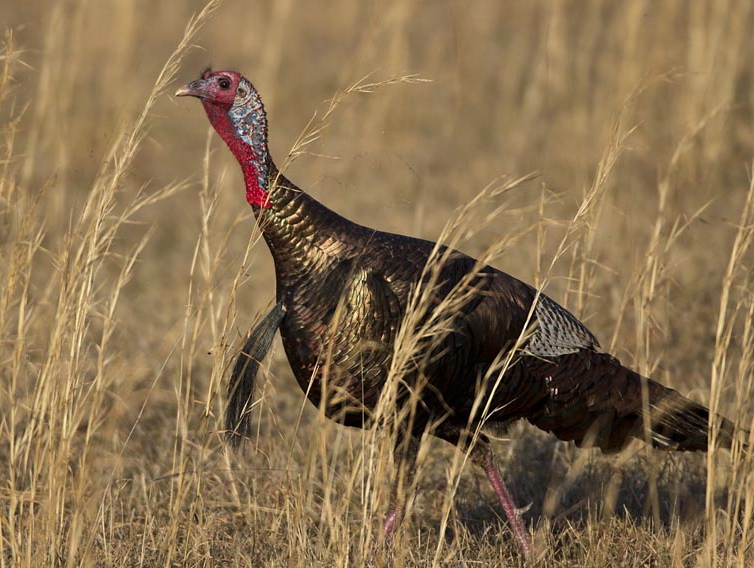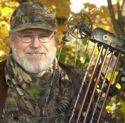With Kentucky’s spring wild turkey season on the horizon, the outlook is promising.
A number of factors seem to point to better than average hunting conditions and flock status. Hens and gobblers are in excellent body condition after a heavy mast crop last fall, and a mild winter. The AccuWeather forecast for Central Kentucky is calling for average to above average temperatures, with near normal rainfall, during the general season.
Kentucky’s woods and fields are greening up now and trees will be leafing out by mid-April. Turkeys will have lots of food options — clover, alfalfa and winter wheat in fields, and tender forbs in woodland edges.

The greening woods will provide cover for hunters, making it easier to move on gobbling toms without being seen.
Season Dates / Bag Limits
Hunting starts this weekend, April 1-2, with the youth-only season, open to boys and girls who haven’t reached their 16th birthday by the date of the season.
The general season dates are April 15 through May 7.
Shooting hours for both spring seasons are 30 minutes before sunrise to 30 minutes after sunset. The bag limit for turkey hunting in the spring is two (2) birds. Hunters may take a male turkey or a turkey with a visible beard. No more than one (1) bird may be taken per day.
Turkeys taken by youths during the youth-only season count toward the spring turkey bag limit. All harvested turkeys must be logged on hunting licenses, and telechecked. See details at www.fw.ky.gov.
Anyone may call turkeys, or assist in the hunt. Callers and assistants are not required to possess a hunting license or turkey permit, and may carry equipment while in the field.
Turkey Populations Increasing in Most Kentucky Counties
Kentucky’s wild turkey population is estimated to be about 220,000 birds, and population growth is continuing in a majority of Kentucky counties.
“If you look at the periods just before and after the 2010 record harvest, there were harvest decreases of at least five percent in 15 counties, harvest increases of at least five percent in 89 counties, and stable harvests in 16 counties,” said Zak Danks, who became wild turkey program coordinator for the Kentucky Department of Fish and Wildlife Resources in July 2016.
In the past six spring seasons, the harvest trend is statistically stable. After the record harvest in 2010, the number of wild turkeys taken during the spring season in Kentucky has averaged 31,607, with only one season having a harvest below 30,000 (29,943 in 2014).
The annual brood survey conducted by the Kentucky Department of Fish and Wildlife Resources found that the number of turkey poults per hen averaged 1.6 across the state in 2016, down from 2.3 the year before.
Hunters might encounter fewer juvenile birds (jakes) this spring, but there will be plenty of 2-year-old birds, and they typically do the most gobbling.
Some County Populations Decline, While Others Increase
A number of factors may be at work in counties where turkey populations and harvests have declined.
“What’s happening here is happening in other states in the region,” said Danks.
In the early years of population expansion, growth is rapid, but over time there’s a natural tendency for populations to stabilize. There’s a density dependence, as population growth rates are regulated by the density of a population.
“At first populations may overshoot the capacity of the habitat, but to expect such high numbers over time is unrealistic,” said Danks.

Most of the counties that have experienced declines in poult production and wild turkey harvest are in western Kentucky, with Livingston and Crittenden counties cited as examples. These counties were among some of the first stocked (late 1970s, early 1980s) during the restoration era, which ended in 1997.
By contrast, turkey populations in some counties in south central Kentucky are experiencing 10 to 15 percent increases. “They were stocked later, and hitting their prime later,” said Danks. “Wayne and Pulaski are examples. These are huge counties with lots of excellent habitat.”
In some northern counties, such as Boone, Gallatin and Trimble, business and residential development is reducing huntable habitat. “These are small counties with a lot of hunters,” said Danks. “Turkey populations are subject to fluctuations.”
There is growing evidence that turkey flocks in some counties are nearing, or have reached, carrying capacity.
“Nobody really knows how to determine if carrying capacity has been reached,” “We do know our restored population has been growing fast and that at some point carrying capacity (maximum sustainable population) will be reached.”
“(Declines) are concerning, but not unexpected,” said Danks. “What that really tells us is that some of our populations have approached carrying capacity.”
Look and Listen / Pre-Season Scouting
If you hunt turkeys on the same land year after year, and know how the turkeys act during the season, pre-season scouting may not seem important.
But it is, especially if there have been changes to the landscape, such as logging, land clearing for agriculture or crop rotations. New roads, trails and clearings may change turkey patterns, how they move and where they feed.
For more outdoors news and information, see Art Lander’s Outdoors on KyForward.
After a rain, look for turkey tracks on roads and in fields. Feathers and turkey droppings are provide important clues to roosting and feeding areas.
Flocks, segregated by sex, are just starting to break up, so monitoring your hunting area in the next two weeks is critical.
When you see hens wandering around alone, that’s a sure sign that breeding is getting underway. Hens are looking for nest sites, or moving back and forth from their nests. At the end of the day, hens go back to the gobbler, and roost nearby him overnight.
Glassing fields with binoculars allows you to scout without alarming birds, but the best way to locate birds in the remaining days before the hunting begins, is listening at dawn and dusk for gobbling.
This can be done on foot or from a vehicle, moving to a ridge, hilltop or big field where you can hear what’s going on within a half mile or so.
Take notes, so you know where gobblers are most active. That will allow you to develop an access plan, to move into the area without being seen or heard, when the hunting starts.
Hunt hard, be safe. Always be sure of your target before you shoot, especially in low light.
Art Lander Jr. is outdoors editor for NKyTribune and KyForward. He is a native Kentuckian, a graduate of Western Kentucky University and a life-long hunter, angler, gardener and nature enthusiast. He has worked as a newspaper columnist, magazine journalist and author and is a former staff writer for Kentucky Afield Magazine, editor of the annual Kentucky Hunting & Trapping Guide and Kentucky Spring Hunting Guide, and co-writer of the Kentucky Afield Outdoors newspaper column.





















